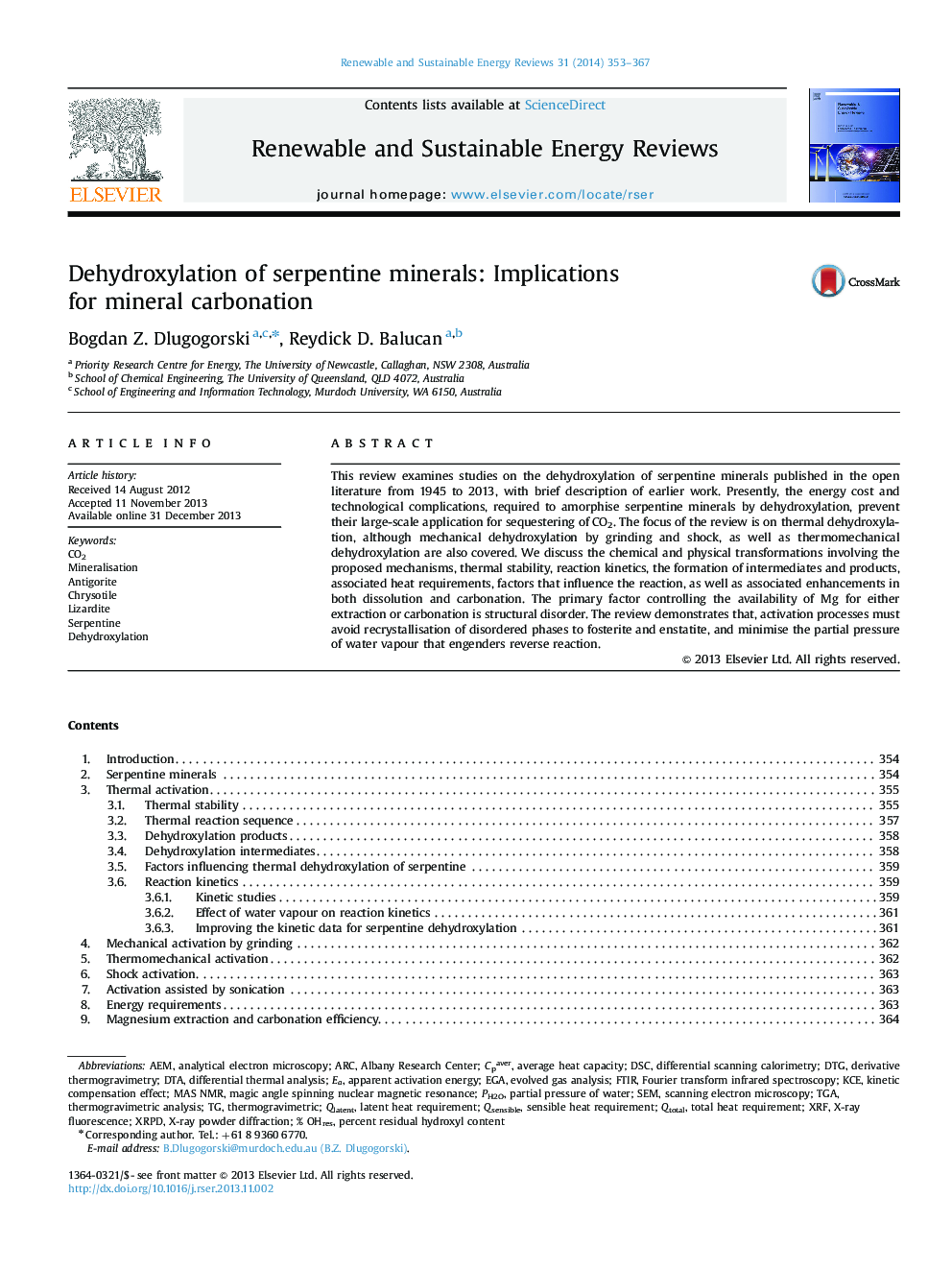| Article ID | Journal | Published Year | Pages | File Type |
|---|---|---|---|---|
| 8120356 | Renewable and Sustainable Energy Reviews | 2014 | 15 Pages |
Abstract
This review examines studies on the dehydroxylation of serpentine minerals published in the open literature from 1945 to 2013, with brief description of earlier work. Presently, the energy cost and technological complications, required to amorphise serpentine minerals by dehydroxylation, prevent their large-scale application for sequestering of CO2. The focus of the review is on thermal dehydroxylation, although mechanical dehydroxylation by grinding and shock, as well as thermomechanical dehydroxylation are also covered. We discuss the chemical and physical transformations involving the proposed mechanisms, thermal stability, reaction kinetics, the formation of intermediates and products, associated heat requirements, factors that influence the reaction, as well as associated enhancements in both dissolution and carbonation. The primary factor controlling the availability of Mg for either extraction or carbonation is structural disorder. The review demonstrates that, activation processes must avoid recrystallisation of disordered phases to fosterite and enstatite, and minimise the partial pressure of water vapour that engenders reverse reaction.
Keywords
DTAKCEXRPDEGADTGDSCMAS NMRAEMCO2 mineralisationTGADifferential Thermal AnalysisAntigoriteKinetic compensation effectApparent activation energyThermogravimetric analysisEvolved gas analysisthermogravimetricDerivative thermogravimetryMagic angle spinning nuclear magnetic resonanceFTIRFourier transform infrared spectroscopyXRFX-ray fluorescenceArcLizarditeSEManalytical electron microscopyScanning electron microscopyX-ray powder diffractionDifferential scanning calorimetryChrysotile
Related Topics
Physical Sciences and Engineering
Energy
Renewable Energy, Sustainability and the Environment
Authors
Bogdan Z. Dlugogorski, Reydick D. Balucan,
